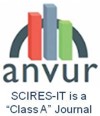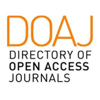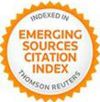Digital Curation for Archaeological Heritage: the Case Study of Museo Diffuso Castello d’Alceste in San Vito dei Normanni 
Abstract
Information and communication technologies (ICT) can provide effective solutions for the enhancement of cultural heritage (CH) when they answer to narrative needs, which often evolve and change, because of the amount of dynamic information that comes from scientific research. The following paper aims to provide a methodological approach for CH time-varying representations. The goal is to design and develop a “diachronic” application that can represent the multi-layer chronology of an archaeological site, in line with the progressive archaeological discoveries. This investigation focuses on some important issues about digital curation practices, specifically related with Augmented Reality (AR) technology for Cultural Heritage. This article aims to analyse these issues and to propose solutions by starting from a practical casestudy, regarding an AR mobile application for the enhancement of the archaeological site Museo Diffuso Castello d’Alceste, in San Vito dei Normanni (BR).
Keywords
Full Text:
PDFDOI: http://dx.doi.org/10.2423/i22394303v14n2p157
References
Baratti, F. (2013). Ecomusei, paesaggi e comunità. Esperienze, progetti e ricerche nel Salento. Milano: Franco Angeli.
Bekele, M., Pierdicca, R., Frontoni, E., Malinverni, E., & Gain, J. (2018). A survey of augmented, virtual, and mixed reality for cultural heritage. Journal on Computing and Cultural Heritage, 11(2), 1–36. https://doi.org/10.1145/3145534
Boboc, R.G., Băutu, E., Gîrbacia, F., Popovici, N., & Popovici, D. M. (2022), Augmented Reality in Cultural Heritage: An Overview of the Last Decade of Applications. Applied Science, 12(19). https://doi.org/10.3390/app12199859
Brooke, J. B. (1996). SUS: A quick and dirty usability scale. In Usability Evaluation in Industry, 189, 4-7. https://api.semanticscholar.org/CorpusID:107686571
Checa, D., Gatto, C., Cisternino, D., De Paolis, L.T., & Bustillo, A. (2020). A Framework for Educational and Training Immersive Virtual Reality Experiences. Lecture Notes in Computer Science (including subseries Lecture Notes in Artificial Intelligence and Lecture Notes in Bioinformatics), 12243 LNCS (pp. 220 – 228).
Cisternino, D., Gatto, C., & De Paolis, L.T. (2018). Augmented Reality for the Enhancement of Apulian Archaeological Areas. In Fifth International Conference Augmented and Virtual Reality, and Computer Graphics (AVR 2018), Otranto, Italy, June 24-27, 2018, LNCS 10850 (pp. 370-382). Springer. https://doi.org/10.1007/978-3-319-95282-6_27
Cisternino, D., Corchia, L., De Luca, V., Gatto, C., Liaci, S., Scrivano, L., Trono, A., & De Paolis, L. T. (2021). Augmented Reality Applications to Support the Promotion of Cultural Heritage: The Case of the Basilica of Saint Catherine of Alexandria in Galatina. Journal on Computing and Cultural Heritage, 14(4), 1-30. https://doi.org/10.1145/3460657
Clini, P., Quattrini, R., Frontoni, E., Pierdicca, R., & Nespeca, R., (2017). Real/not real: pseudo-holography and augmented reality applications for cultural heritage. In Handbook of research on emerging technologies for digital preservation and information modeling (pp. 201-227). IGI Global.
Cocchiaro, A. (1996). S. Vito dei Normanni (Brindisi), Castello, Notiziario delle attività di tutela. Taras 16-1, 58-61.
Condorelli, F., Luigini, A., & Nicastro, G. (2024). The digitisation of Brixen's historic city center for heritage education. SCIRES-IT - SCIentific RESearch and Information Technology, 14(1), 251–264. http://dx.doi.org/10.2423/i22394303v14n1p251
Council of Europe Framework Convention on the Value of Cultural Heritage for Society (CETS No. 199), Faro 27/10/2005. Retrived from https://www.coe.int/en/web/conventions/full-list?module=treaty-detail&treatynum=199
De Grossi, J., De Venuto, G., Minniti, C., & Semeraro, G. (2015). I resti faunistici dal Castello di Alceste (San Vito dei Normanni – BR) - Contributo allo studio delle pratiche sacrificali nella Messapia Arcaica. In Studi di Antichità. Galatina: Congedo.
De Paolis, L.T., Faggiano, F., Gatto, C., Barba, M.C., & De Luca, V. (2022). Immersive Virtual Reality for the fruition of ancient contexts: the case of the Archaeological and Naturalistic Park of Santa Maria d’Agnano in Ostuni. Digital Applications in Archaeology and Cultural Heritage (DAACH), 27:e00243. http://dx.doi.org/10.1016/j.daach.2022.e00243
De Paolis, L. T., Chiarello, S., Gatto, C., Liaci, S., & De Luca, V. (2022). Virtual Reality for the Enhancement of Cultural Tangible and Intangible Heritage: the case study of the Castle of Corsano. Digital Applications in Archaeology and Cultural Heritage (DAACH), Digital Applications in Archaeology and Cultural Heritage, 27:e00238. DOI: 10.1016/j.daach.2022.e00238
López-Menchero, V.M., & Grande, A. (2020). The principles of the Seville Charter. In Proceedings XXIIIrd International CIPA Symposium.
Marto, A., Melo, M., Gonçalves, A., & Bessa, M. (2021). Development and Evaluation of an Outdoor Multisensory AR System for Cultural Heritage. IEEE Access. PP. 1-1. DOI: 10.1109/ACCESS.2021.3050974.
Masneri, S., Dominguez, A., Wild, F., Pronk, J., Heintz, M., Tiede, J., Nistor, A., Chiazzese, G., & Mangina, E. (2020). Work-in-progress-ARETE-An Interactive Educational System using Augmented Reality. In D. Economou, A. Klippel, H. Dodds, A. Pena-Rios, M. J. W. Lee, D. Beck, J. Pirker, A. Dengel, T. M. Peres, & J. Richter (Eds.), 2020 6th International Conference of the Immersive Learning Research Network (iLRN): Conference Proceedings (pp. 283-286).
Mediati, D., & Brandolino, R. G. (2024). Digital surveying, augmented trekking and valorisation strategies for inland areas: The Grandi Pietre Valley. SCIRES-IT - SCIentific RESearch and Information Technology, 14(1), 79–96. http://dx.doi.org/10.2423/i22394303v14n1p79
Pierdicca, R., Frontoni, E., Zingaretti, P., Malinverni, E., Colosi, F., & Orazi, R. (2015). Making Visible the Invisible. Augmented Reality Visualization for 3D Reconstructions of Archaeological Sites. In Lecture Notes in Computer Science (including subseries Lecture Notes in Artificial Intelligence and Lecture Notes in Bioinformatics), Vol. 9254, (pp. 25-37). http://dx.doi.org/10.1007/978-3-319-22888-4_3
Pietroni, E., & Ferdani, D. (2021). Virtual Restoration and Virtual Reconstruction in Cultural Heritage: Terminology, Methodologies, Visual Representation Techniques and Cognitive Models. Information, 12(4). https://doi.org/10.3390/info12040167
Rodríguez-Gonzálvez, P., Muñoz-Nieto, A., Del Pozo, S., Sánchez-Aparicio, L., Gonzalez-Aguilera, D., Micoli, L., Gonizzi Barsanti, S., Guidi, G., Mills, J., Fieber, K., Haynes, I., & Hejmanowska, B. (2017). 4d Reconstruction and Visualization of Cultural Heritage: Analyzing our Legacy through Time. Isprs - International Archives of the Photogrammetry, Remote Sensing and Spatial Information Sciences. XLII-2/W3, pp. 609-616. (a)
Rodríguez-Gonzálvez, P., Jiménez Fernández-Palacios, B., Muñoz-Nieto, A., Arias, P., & González-Aguilera, D. (2017). Mobile LiDAR System: New Possibilities for the Documentation and Dissemination of Large Cultural Heritage Sites. Remote Sensing. 9. 189. https://doi.org/10.3390/rs9030189
Semeraro G. (1999). S.Vito dei Normanni (Brindisi), località Castello. Taras XIX(1), 63-65.
Semeraro, G., & Monastero, A. (2011). Itinerario di Visita del Castello di Alceste (S. Vito dei Normanni - BR). S. Vito dei Normanni.
Semeraro G. (2011). Organizzazione degli abitati e processi di costruzione delle comunità locali nel Salento tra IX e VII sec.a.C., in Burgers G.-J., Saltini Semerari G. (eds), Social Change in Early Iron Age. southern Italy, Atti del Workshop Internazionale, Roma 5-7 May 2011, Papers of the Royal Netherlands Institute in Rome (Mededelingen van het Koninklijk Nederlands Instituut te Rome), vol. 63, ISBN 978-88-6060-689-2 (pp. 204-219).
Semeraro G. (2014). Le comunità indigene delle Murge salentine. In G. Greco & B. Ferrara (Eds.), Segni di appartenenza e identità di comunità nel mondo indigeno. Quaderni del Centro Studi Mgnagrecia, 18. Atti del Seminario di studi, Napoli, 6-7 luglio 2012 (pp. 329-343). Napoli: Naus Editoria. Retrieved from https://www.academia.edu/31064703/Le_comunit%C3%A0_indigene_delle_Murge_salentine
Semeraro G. (2015). Organizzazione degli abitati e processi di costruzione delle comunità locali, in G. Saltini Semerari e G.-J. Burgers (eds.), Early Iron Age Communities of Southern Italy. Roma: Palombini Editori.
Semeraro G. (2017). Dinamiche relazionali ed identitarie nell’orizzonte iapigio di età arcaica. Contesti e materiali: l’area messapica settentrionale. In Atti del LIV Convegno di Studi sulla Magna Grecia, Taranto 25 - 28 Settembre 2014, Istituto per la Storia e l’Archeologia della Magna Grecia – Taranto, 2017 –ISBN 978-88-98066-35-3 (pp. 317-329).
Semeraro G. (2018). Methods and Practice in Studies of the Economy of Messapia. In Messapia: Economy and Exchanges in the Land between Ionian and Adriatic Sea. Edited by Francesco D’Andria and Grazia Semeraro. Proceeding of the 19th International Congress of Classical Archaeology 22-26 May 2018, Archaeology and Economy in the Ancient World, Vol.12. https://doi.org/10.11588/propylaeum.760
Article Metrics
Metrics powered by PLOS ALM
Refbacks
- There are currently no refbacks.
Copyright (c) 2024 Carola Gatto, Grazia Semeraro

This work is licensed under a Creative Commons Attribution-NonCommercial-NoDerivatives 4.0 International License.
SCIRES-IT, e-ISSN 2239-4303
Journal founded by Virginia Valzano





